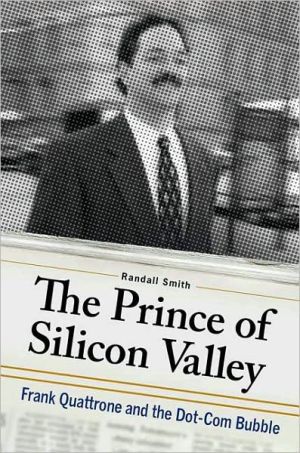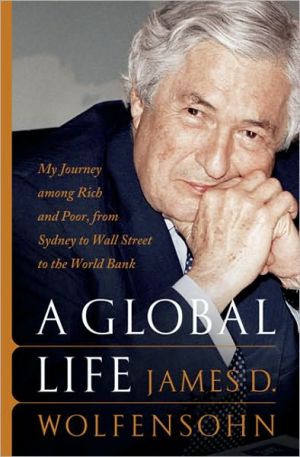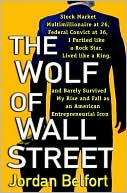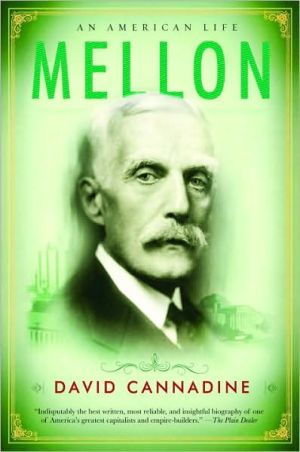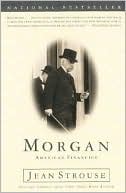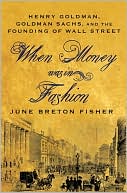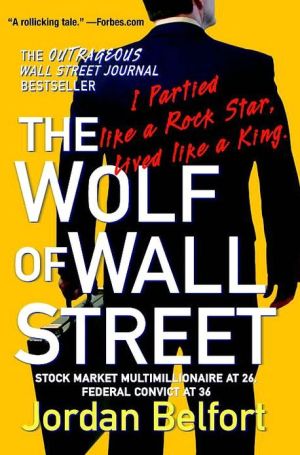The Prince of Silicon Valley: Frank Quattrone and the Dot-Com Bubble
In many ways, [Frank] Quattrone's was the type of Horatio Alger story common on Wall Street. The son of a garment union official from the poor side of Philadelphia, he had earned a scholarship to that city's best high school and college, joining Morgan Stanley, one of the top Wall Street firms, on graduation, and then attending Stanford's business school. Bucking Morgan Stanley's at times stodgy ways, he had blazed his own maverick career path by forging close ties with technology...
Search in google:
RISE, FALL AND RETURNThe Prince of Silicon Valley traces the rise of the foremost investment banker of the Internet stock-market bubble, from the back streets of South Philadelphia to the peak of finance as the highest paid banker on Wall Street. From Cisco to Netscape to Amazon, Frank Quattrone took some of the biggest names in technology public. During the bubble years of 1999 and 2000, his California-based technology banking group led the most hot initial public offerings, which lifted the entire stock market to record heights. But after the bubble burst, the hot stocks cooled and ordinary investors lost billions. It emerged that brokers in Quattrone’s firm had created lucrative investment accounts, stuffed with hot IPOs, for banking clients who became known as “Friends of Frank.” Some of the brokers, regulators charged, cut off other investors who refused to pay back a share of their IPO profits. And so Quattrone and his firm became embroiled in no less than four different investigations of bubble-related misconduct, culminating in two criminal trials against Quattrone for obstruction of justice, the first resulting in a mistrial, the second in a conviction in 2004. After his conviction was overturned by an appeals court in 2006, Quattrone returned in triumph to the banking business, advising no less than Internet search giant Google on corporate strategy. But the story of his fall from grace, however temporary, remains a cautionary tale of ambition gone wrong—of a Wall Street Icarus who flew too close to the sun. 'The Prince of Silicon Valley' is an absorbing noir detective story of the investigations and trials that brought him to the brink of disaster. Publishers Weekly There is probably no single figure better suited to embody both the successes and excesses of the late 1990s tech bubble than Credit Suisse First Boston technology banking leader Frank Quattrone. The man behind some of the hottest technology IPOs of the decade, Quattrone's rise from South Philly street tough to the highest echelons of the banking industry, and the questionable practices that took him there and ultimately landed him in court for obstruction of justice, is the stuff of modern-day myth. Unfortunately, in the hands of Wall Street Journal reporter Smith, Quattrone's story is buried under a thicket of detail and minutiae without a clear line of analysis to help lay readers understand exactly what went wrong (for example, the author details instances where stock analysts were pressured to give positive coverage of companies doing business with Quattrone's group, without explaining what an analyst does or how their work affects the stock market). While an important and frequently compelling account, the book conveys little about the central personalities and reads very much like the court transcripts upon which it is based. (Jan.)
THE BANKER\ BOOK\ ONE\ BUBBLES\ 1\ THE APPROACH of New Year’s Eve 1999 carried a millennial mixture of giddy euphoria and lurking fear beyond the simple turning of the calendar page from 1999 to 2000. The year 1999 had brought a stock market boom, with the Dow Jones Industrial Average surging 25 percent, its fifth consecutive year of double-digit gains, breaking 10,000 for the first time in March, having entered the decade of the 1990s around the 3,000 level.\ Leading the boom were stocks of companies that benefited from usage of the Internet, a technology still in relative infancy yet promising to transform nearly all industries—from media to car sales. Already in 1999, the stock market value of online stock brokerage Charles Schwab Corporation, leader of the discount-commission Web sites where a new breed of day traders went to buy Internet stocks, had topped that of old-economy broker Merrill Lynch & Company. In June of that year, Merrill had even waved a white flag, dropping its stated opposition to this sort of brokerless "do-it-yourself" investing by offering a new online trading capability of its own.\ Everywhere other old-economy companies were rolling out their own Internet strategies too. Old-media colossus Time Warner Inc., rich with incumbency holdings of magazines, movies, and cable TV, would attempt to get ahead of the trend in January 2000 by merging with Internet challenger America Online Inc., itself the hottest big stock of the 1990s. General Electric, with its industrial strength in turbines and power plants, would produce an Internet plan. Companies that even just announced Internet strategies would see their stocks surge; when venerable high-end auction house Sotheby’s Holdings Inc. did so on January 19, 1999, its stock rose 25 percent that day. The promised surge in Internet commerce was seen especially likely to benefit telecommunications companies such as Global Crossing Ltd., which would carry this burgeoning Internet traffic. Their stocks were also soaring.\ The Internet-led stock market boom accompanied growth in the real economy as well. In the fourth quarter of 1999, the U.S. economy was growing at a 7.3 percent clip, the fastest since 1984 and a level that wouldn’t be exceeded for nearly four years. Capital gains fueled by the market boom, and the real economic growth, had swollen government tax receipts enough—when coupled with modest tax increases enacted early in the Clinton administration—to produce a balanced federal budget, a feat that hadn’t been achieved in forty years and which wouldn’t come close to recurring in the eight-year Bush administration.\ Adding wind to the back of the technology boom was the element of fear. In this case, the fear was that there might be a worldwide series of computer-system crashes based on something called the Y2K bug. Y2K, short for the year 2000, threatened computer systems—the theory was—if they misread "00" for 1900 instead of 2000. Prodded by Congress, the Clinton administration had established a Y2K task force, which eventually estimated that private industry and governments had spent more than $100 billion on tackling the Y2K bug threat.\ So real was the Y2K threat perceived to be hanging over December 31, 1999, that some Wall Street bankers took out thousands in cash from their checking accounts in case cash machines broke down. Merrill Lynch booked hundreds of hotel rooms for executives who had to work through the New Year’s weekend, and Schwab banned vacations from December 27 through January 15. And on the national TV news that New Year’s Eve, no less a personage than Michael Armstrong, the chief executive of telecom cable giant AT&T, who chaired a federal advisory council on network reliability, appeared to reassure viewers that he didn’t expect any widespread disruption in the phone systems.\ Armstrong was cochair with Michael Powell, the chairman of the Federal Communications Commission, of an obscurely named interoperability and reliability council—tasked by the federal government with minimizing Y2K disruptions. Among its concerns, he recalled in a 2008 interview, was that entire networks might "go dark," or consumers might even get screwed-up bills.\ Armstrong believed that fear and uncertainty themselves could "create problems that weren’t really there." And so he took to the airwaves on live network TV from AT&T’s network operations center in Bedminster, New Jersey, to reassure the public that all was well. His goal was to send "a message of confidence that the systems would be performing . . . a show of confidence that the CEO is there hands-on."\ That same month of December 1999, in a Wall Street deal that would years later be cited and investigated as an epicenter of sorts of the excesses of the technology stock fever, a computer software company called VA Linux Systems Inc. went public. VA Linux marketed "open-source" software, which was created by users and available free by download from the Internet and thought to pose a challenge to the standard programs embedded in most desktop computers by Microsoft Corporation.\ So strong was the investor frenzy for open-source software stocks that the initial public offering of VA Linux on December 9 set a record for the biggest first-day gain of any IPO before or since. From its IPO price of $30 a share, VA Linux soared 697.5 percent to close at $239.25. The previous record holder, TheGlobe.com, an online "community" provider, had risen 605 percent on its first day of trading in November 1998. David Menlow, president of IPOfinancial network.com, told The News & Observer (Raleigh, North Carolina) that the runup was an "emotional feeding frenzy" based on earlier first-day gains of 400 percent or more for other Linux-related stocks. One of the first to go public, Red Hat Inc., whose stock had more than tripled on its first day of trading in August 1999, had risen more than twentyfold by December.1 The $9.5 billion first-day stock market value of VA Linux, The Wall Street Journal noted, was more than half that of Apple Computer Inc.2\ The next month, the Wall Street firm that led the VA Linux IPO, Credit Suisse First Boston, issued a release crowing that the VA Linux deal and fifty-two others like it in 1999 had helped make it the leader in technology investment banking. "We are thrilled to have achieved our goal of #1 market share in by far the most active year the technology industry has seen to date," the announcement said.\ The leader of the First Boston technology banking group was a forty-four-year old banker with a twinkle in his eye and a mischievous grin who often chose off-beat sweaters over pinstriped suits. His name was Frank Quattrone. With an unruly brown mustache and hair parted down the middle, Quattrone ran the operation from a second-floor corner office in a low-rise brick building near Stanford University in Palo Alto, California, the center of Silicon Valley, south of San Francisco, where so many technology start-ups were hatched. He lived just four miles away in Los Altos Hills, on a spectacular rise overlooking the Valley. It was all far from the vaulted marble lobby of CSFB headquarters in New York.\ The technology stocks he specialized in had led the market to what one venture capitalist, John Doerr, famously described as "the largest legal creation of wealth in history." In March 1995, the market value of technology stocks was $510 billion, or about one tenth of the entire U.S. market, according to Wilshire Associates. Five years later, at the top in March 2000, the value of tech stocks had soared more than tenfold, to $6 trillion, or 35 percent of the market. (Three years later the value had shrunk back to $1.5 trillion.)\ The sizzling sector lifted the entire market to new records in a phenomenon that gripped the nation. A member of the Ramones rock group had written a song about Maria Bartiromo, the CNBC-TV newscaster who stood on the floor of the New York Stock Exchange giving stock market updates each morning. And singer Barbra Streisand took to calling technology companies just before they went public in search of hot stock allocations.\ In many ways Quattrone’s was the type of Horatio Alger story common on Wall Street. The son of a garment union official from the poor side of Philadelphia, he had earned a scholarship to that city’s best high school and college, joining Morgan Stanley, one of the top Wall Street firms, after graduating summa cum laude, and then attending Stanford’s business school. Bucking Morgan Stanley’s at times stodgy ways, he had blazed his own maverick career path by forging close ties with technology entrepreneurs and investors in the heart of Silicon Valley, at the dawn of the revolution in personal computers that would eventually give birth to the explosion of Internet activity.\ At Morgan Stanley, Quattrone had participated in the IPOs of computer networking company Cisco Systems Inc. and Internet browser Netscape Communications Corporation. Bolting from the firm where he had learned the business, in 1996 Quattrone had taken charge of a small band of followers at a time that coincided with the Internet boom and consequent stock market bubble. First at Deutsche Bank AG and then at Credit Suisse First Boston, he had shown that if he could share control of the analysts and brokers who followed technology stocks and served their executives, he could offer a unique integrated service that gave him an edge over more traditional firms that had more entrenched controls and bureaucracies.\ At Deutsche Bank his team had led the IPO of the Internet bookseller Amazon.com. And at First Boston, which he joined in mid-1998, he had a juggernaut that led Wall Street in the number of high-tech IPOs. On Tuesday March 14, 2000—at the very peak of that bubble—he had sent an e-mail updating members of his technology banking group on his ultimately successful efforts to sweeten the group’s contract at Credit Suisse First Boston. He said, "guys, we are on the verge of global domination in this business and I appreciate all of the hard work and sacrifice on your parts that have made it possible." The same e-mail projected his group’s banking revenues, which topped $600 million in 1999, would exceed $1 billion in 2000.3\ But Quattrone also became an archetype of another classically American story: the rise and fall of a gifted individual who gains wealth and power but then is tripped up by the same drive that propels him to the top. The self-confidence and win-at-all costs mentality that underpins his success eventually blinds him to the risks of his tactics—and of the backlash his very success may provoke.\ In this case, just as Quattrone was propelled to the pinnacle of the Wall Street banking world by the force of the Internet stock bubble, his career was wrenched away from him by the bursting of that same bubble, and by the backlash it engendered from investors and politicians and regulators acting on their behalf. Although the criminal obstruction-of-justice charges eventually leveled against him by federal prosecutors seemed trivial to some, they were brought against the backdrop of a crackdown by a broad coalition of regulators against practices that, they charged, helped pump up the bubble and greased the palms of insiders at the expense of average investors.\ The time span of regulatory pursuit of Quattrone, his firm, and the brokers who worked in his group eventually rivaled or exceeded the length of his reign as the bubble’s top banker. The reign lasted, by one measure, for the five years between the IPO of Netscape in mid-1995 and the start of the market’s descent in mid-2000. The regulatory pursuit of Credit Suisse First Boston and Quattrone lasted more than six years, from May 2000—with the receipt of an anonymous letter alleging improprieties in how CSFB allocated IPOs—until August 2006, when prosecutors agreed to drop criminal charges against Quattrone.\ His criminal trials—which had featured the disclosure that he had been paid $120 million for a single year’s work in 2000—provided a coda to the regulatory pursuit of a wide array of executives from Wall Street to telecom, cable TV, and energy after the stock market bust brought the collapse of high-profile companies such as Enron and WorldCom. The Quattrone trials—which closely followed the filing of civil charges that he and his group had misused hot stock offerings during the bubble to win banking business, and that his firm had issued fraudulent research to hype stocks during the market mania—were a harsh comedown from the zenith of his Icarus-like career.\ Though the charges against Quattrone personally were dropped in 2006, his firm had fired three brokers who worked with his group in June 2001 for cutting off accounts that wouldn’t pay higher commissions to keep getting hot initial public offerings. And his firm in April 2003 had agreed to pay $200 million to settle charges by the Securities and Exchange Commission, working in concert with other regulators, that its analysts had issued fraudulent or exaggerated research and its brokers engaged in the "spinning" of hot IPOs to corporate executives. Although Quattrone wasn’t party to the settlement and Credit Suisse didn’t admit any wrongdoing, the SEC charges focused on actions by Quattrone’s group members and mentioned Quattrone by name two dozen times.4\ When he testified to securities industry regulators probing the alleged IPO misconduct in September 2002, Quattrone had explained that after working for a year as an investment-banking generalist in the San Francisco office of his former firm, Morgan Stanley, in 1982 he had begun specializing in technology stocks. To win assignments selling stock or arranging mergers, he told the investigators—with four lawyers present representing him and his firm—he had concentrated on getting to know the leading venture capitalists who themselves specialized in finding companies with the best futures. Getting close to them, he said, meant he and his team would know when their companies needed more capital, or were ready to go public.\ The venture capital business of Silicon Valley had grown up after World War II, as recounted in the book Creative Capital: Georges Doriot and the Birth of Venture Capital by Spencer Ante. Indeed, Doerr’s firm, Kleiner Perkins Caufield & Byers in Menlo Park, was one of its founding pioneers. Thomas Perkins had been a computer-division marketing manager at Hewlett-Packard, the protean Silicon Valley start-up launched in David Packard’s garage, now a museum in Palo Alto, in 1939. Eugene Kleiner had worked in sales at another bellwether Valley technology company, Fairchild Semiconductor, after a stint at the Shockley Semiconductor Laboratory division of Beckman Instruments in Mountain View, California.5 The head of sales at Fairchild, launched in 1958, was Donald Valentine, who went on to form his own venture capital colossus, Sequoia Capital, in 1972.\ In 1958, with the backing of Fairchild’s founder, Sherman Fairchild, the first prominent West Coast venture firm Draper, Gaither & Anderson was founded, cementing its stature a decade later with its backing of Intel Corporation along with the firm of East Coast VC pioneer Arthur Rock. Intel became the leading microprocessor company, whose chips powered the desktop computers that became ubiquitous in the 1980s. It was in 1971 that computer journalist Don Hoefler christened the area "Silicon Valley," and that decade saw a proliferation of VC firms, powered in part by a federal law requiring corporations to back up their pension promises with dedicated investments. That law was passed in 1974, more than a decade after the bankruptcy of Studebaker Company had left many of its workers without promised pensions.\ It was an East Coast venture firm, American Research and Development, which in 1957 helped launch one of the most successful computer companies of the 1960s, Digital Equipment Corporation, a mini-computer maker that challenged the monopolylike dominance of mainframe goliath International Business Machines Corporation (IBM).\ In the 1970s, some of the high-tech action moved down the food chain to video games and primitive small computers. In 1976, Valentine’s Sequoia led a group of venture investors who backed Atari, the creator of the Pong video game, before it was sold to Warner Communications. One of Atari’s game designers, Steve Jobs, raised $517,500 in 1978 from a group led by Rock and Sequoia for a desktop computer company he envisioned that was named Apple. When Apple went public in December 1980, Rock’s own $57,000 investment became worth $2.2 million. As Jobs made the rounds before the IPO, Quattrone heard him speak at Stanford’s business school, and became determined to find "the next Apple."\ Such bankers historically attempted to mediate between the companies seeking capital to grow and investors seeking higher long-term returns. In pricing the new stock issues, they worked to strike a balance each side would regard as fair, and avoid the perception that they are favoring one side or the other.\ Before Quattrone, the biggest Wall Street firms, such as Morgan Stanley, Goldman Sachs, or Merrill Lynch, had viewed technology as merely one of many different industry sectors, and hadn’t thrown a disproportionate share of their resources toward such companies. Some "boutique" firms did specialize in technology, but they didn’t have the same firepower of hundred-member sales forces to sell stock. And so, when they brought big new issues to the market they would sometimes enlist the help of a bigger "bulge-bracket" Wall Street player. For the Apple IPO, a San Francisco growth-stock boutique named Hambrecht & Quist joined forces with Morgan Stanley.\ Quattrone had left Morgan Stanley in 1996, he said later, because the firm wouldn’t give him the resources he believed he needed to develop his own business. When he joined Credit Suisse in 1998, he had arranged a hybrid reporting structure that gave him access to a big firm sales force that could sell his stock deals—but with more freedom to determine his own group’s head count, with research analysts and brokers reporting jointly to executives in his own organization and to other executives in New York. He often said he wanted "a boutique in a bulge-bracket firm."\ But the structure, which gave Quattrone team members the power to hire and fire and set bonuses for the analysts and brokers, reduced the power and control of the New York executives. Testifying in March 2003 in the postbubble investigations, one of them, Credit Suisse research chief Al Jackson of New York, said that when he visited California and tried to engage the Quattrone group analysts, who nominally reported jointly to him, they eventually ignored him. "I felt like, you know, a third wheel," he said. The Quattrone organization hired and fired and set their pay, and even had the power to approve their reports, he said. "I was just wasting my time."6\ The head of the Credit Suisse brokerage force, Andrew Benjamin, voiced similar thoughts about the influence Quattrone wielded over the technology private-client services brokers. Even though Quattrone had moved up "to the top of the ladder" quickly at Credit Suisse based on the revenues he was bringing in, Benjamin said he was "a very control-oriented person. He basically wanted to control everything." While Benjamin acknowledged that "it’s not an unusual personality for someone in that, you know, in that position," but Quattrone oversaw people "right down to, I guess my point is, controlling right down to three PCS brokers, it was, you know, kind of weird, right? . . . You would think he would have more important things to deal with," Benjamin said. "This was completely penny-ante relative to the things he was doing. . . . I think he did that with everything. I think if you were his gardener, he would probably treat you the same way."7\ On March 18, 2008, a small technology-focused financial services firm opened for business with the oddly spelled name Qatalyst Group. The announcement of the new merchant bank featured endorsements from some of the best-known names in the technology world, including top executives at Google, Facebook, and Intuit.\ The spelling of Qatalyst with a Q appeared to be an allusion to its cofounder and chief executive, Frank Quattrone. Some of Quattrone’s clients and supporters wanted to show they had remained loyal to him throughout his legal ordeal. "The launch of Qatalyst is an important development for the technology industry," Google’s chief executive, Eric Schmidt, said in the Qatalyst announcement.8\ "His name cleared and his four years of legal battles behind him, Frank P. Quattrone is back in business in Silicon Valley" began the article about Qatalyst in the San Francisco Chronicle.9 And Quattrone soon showed he was indeed back in the business.\ A few weeks later, Google, the Internet search-engine company whose initial public offering had been led by Quattrone’s old firm, now called Credit Suisse Group, during Quattrone’s second criminal trial in April 2004, hired Qatalyst for advice. The issue was what to do about a bid by software giant Microsoft to acquire Internet destination Yahoo Inc., potentially forming a stronger Google rival.\ Unfortunately, Quattrone’s return to the banking business occurred just a few months before an epic collapse of the next bubble. The debt-bubble meltdown sank the entire stock market in late 2008, becalming the market for initial public offerings of any kind. The carnage left the technology sector stagnant at best, barely a footnote to the wider devastation. But by June 2009, he was back in the news, advising a storage technology company, Data Domain, on a $1.5 billion takeover bid.10\ This is the story of the Bubble banker’s rise, fall, and return.\ Excerpted from The Prince of Silicon Valley by Randall Smith.\ Copyright © 2009 by Randall Smith.\ Published in November 2009 by St. Martin's Press.\ All rights reserved. This work is protected under copyright laws and reproduction is strictly prohibited. Permission to reproduce the material in any manner or medium must be secured from the Publisher.
Bk. 1 The Banker1 Bubbles 52 South Philly 113 Morgan Stanley 174 The Prince of Silicon Valley 215 Miniscribe 276 An Early Brush with the SEC 337 Tech Tales Off 378 The Dream House 409 Building a Powerhouse 4610 Netscape 5211 The Dream Team 5812 Amazon 6415 The Senator 68Bk. 2 The Bubble14 Credit Suisse First Boston 7515 The Mule in the Lobby 8016 The Flaming Ferraris 8517 The Friends of Frank 8818 Monarch of the Valley 9619 Leaning on the Analysts 10520 Denver 11021 Mike Grunwald 11522 The Hottest IPO Ever 12123 Grunwald's Blunder 12824 JohnDoe526 13525 A Secret Weapon 13826 "A Concerned Citizen" 14127 A Last Hurrah for Hot IPOs 14628 The Gumshoes Go to Work 15429 Culture Clash 159Bk. 3 The Bust30 The Prosecutors 16731 "Time to Clean Up Those Files" 17632 The Denver Traders Talk 18733 Damage Control 19534 The Unwritten Rules of Research 20435 A Vote of Confidence 21236 Eliot Spitzer 21937 Spinning 22638 Obstruction 237Bk. 4 Judgment39 The Courthouse Steps 24740 Quattrone Takes the Stand 26041 Juror Number 1 27542 A New Attitude 28343 "You Did a Fine Job" 29044 The Verdict 29645 Reversal 305Epilogue 318Cast of Characters 323Notes 329Index 355
\ Publishers WeeklyThere is probably no single figure better suited to embody both the successes and excesses of the late 1990s tech bubble than Credit Suisse First Boston technology banking leader Frank Quattrone. The man behind some of the hottest technology IPOs of the decade, Quattrone's rise from South Philly street tough to the highest echelons of the banking industry, and the questionable practices that took him there and ultimately landed him in court for obstruction of justice, is the stuff of modern-day myth. Unfortunately, in the hands of Wall Street Journal reporter Smith, Quattrone's story is buried under a thicket of detail and minutiae without a clear line of analysis to help lay readers understand exactly what went wrong (for example, the author details instances where stock analysts were pressured to give positive coverage of companies doing business with Quattrone's group, without explaining what an analyst does or how their work affects the stock market). While an important and frequently compelling account, the book conveys little about the central personalities and reads very much like the court transcripts upon which it is based. (Jan.)\ \
